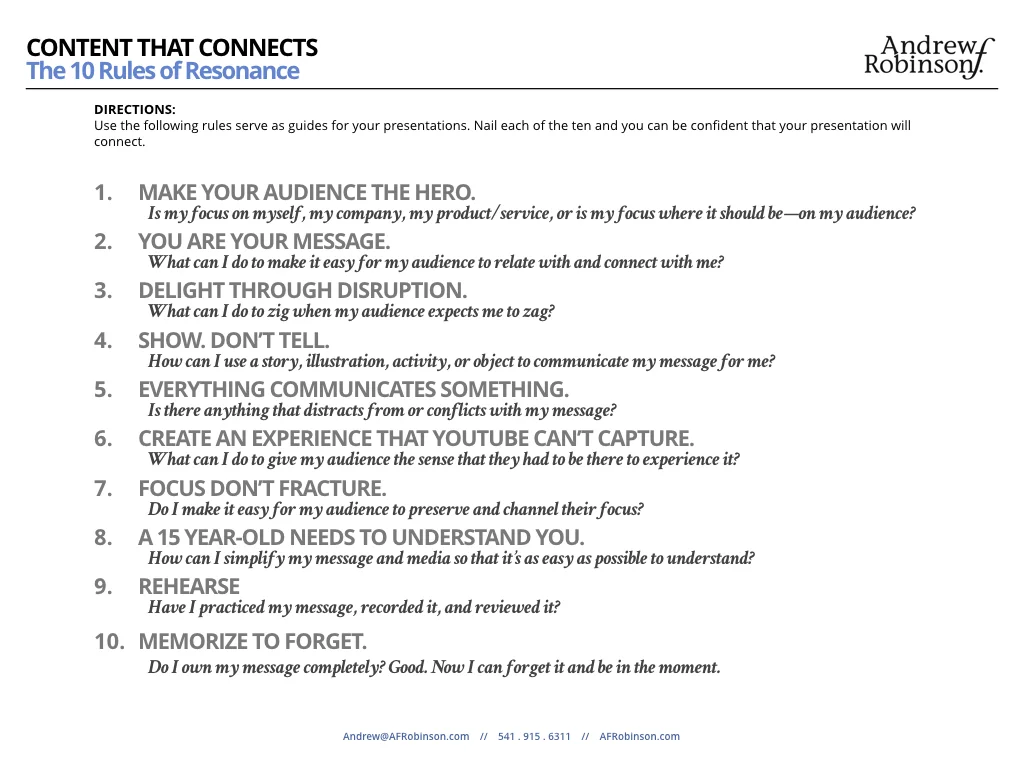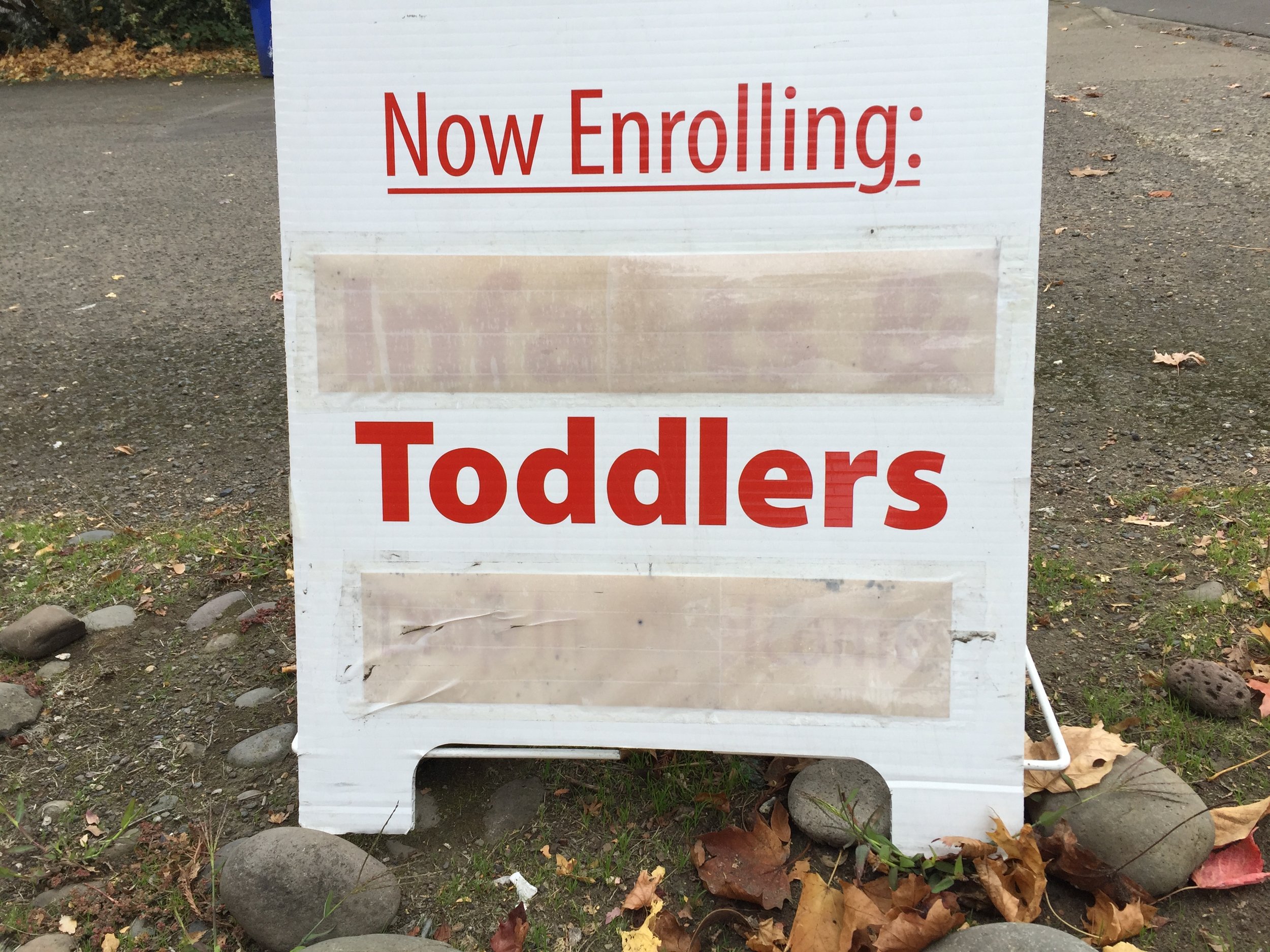How to boost your "Fall in Factor"
I just started reading The Hobbit to my two youngest daughters. Each night as I sit down on their bedroom floor, open the book, and start reading, something magical happens: all three of us fall into the story.
We’re no longer in a bedroom. The three of us enter the story and travel along side Bilbo, Gandalf, and the others on their journey. This explains why every night my daughters say the same thing when I close the book:
“Don’t stop reading!”
Great stories have a “Fall in Factor” that captures us and won’t let go. The same is true of great brands.
You’re probably accustomed to thinking of your brand as having stories that you communicate through messaging, marketing, and advertising. Your brand has a lot more in common with The Hobbit and other great stories than you think.
Just like a great story, great brands have a villain, a hero, struggles, crises, and resolutions. These elements reach out and captivate us.
Nike’s villain, for example, isn’t Under Armor, Adidas, or any other competitor. Nike’s villain the human proclivity for apathy, laziness, self-doubt, and disdain of losing. Read Phil Knight’s biography, Shoe Dog, and you see that this was true from the very beginning of Nike’s story.
Clarify and protect your brand story. It’s yours! Don’t let it devolve into someone else’s story.
Ask the following questions at your next team meeting to clarify your brand story:
- Who is our true villain?
- What does it look like to be a hero in our brand’s story?
- What distractions prevent us from moving our story forward?
Everything becomes more clear when we view our brand as a story. We remember who we’re fighting, what we’re fighting for, and our role in the story.
You build that “Fall in Factor” that every brand craves. The people who come in contact with your brand will say the same thing:
“Don’t stop reading!”
Brand Storytelling In graphic detail
I recently had the privilege of talking about brand storytelling at the 2017 Built Up Festival in Portland, Oregon. The gist of my message was that brands don’t just have stories, they are a story.
The conference organizers, from their founts of infinite creativity, arranged to have an artist translate my presentation into a visual representation in realtime. This is what she came up with!
There’s a lot here, but I a few things jumped out to me:
1. The upper left it reads, “You Get a Story” three times. I’m struck by the repetition the artist employs. What did she want us to take away from it? Here’s my guess: good stories immerse our senses. We lose ourselves in them. Getting a story actually means the story got us. We got gotten!
2. Two overlapping circles appear on the middle-right of the page. The artist labelled one circle “You” and the other “Them”. She nailed it! Consumers, employees, investors, or whichever audience we’re trying to reach, connect with our brand story because our brand story and their story share key narrative elements. Our struggle is their struggle. Our idea of a hero mirrors their idea of a hero, etc.
3. “The Struggle Bus” runs along the bottom of the image. I talked about how important it is for us to understand the struggles people face, but since I never talked about a Struggle Bus, I have no idea what the artist has in mind. There's even a Captain Struggle Bus. Even though I don't understand the reference, it's got me thinking, which is the whole point.
Seeing it in this form makes me think about these concepts in a fresh way. Special thanks to the artist (I’m sorry I didn’t get your name) and Built Oregon for inviting me.
If brand storytelling interests you, check out The Narrative Mind, my new pod-class series that I launched this week.
How Resonance Works
Welcome to Get Gotten. This series explains and explores the ultimate form of engagement—Resonance. Each entry in this series includes an explanation of a key concept that helps you build resonance with the people you seek to engage. I also provide an application for the concept that you can put into practice. If you haven’t already, sign up for my mailing list to have this series delivered directly to your inbox.
You can do more than merely engage people. You can create resonance. That was the message of the last post.
But how does resonance actually work? There are three things you need to know to answer this question.
Let’s begin with an experiment you can try at your next meeting:
Take a drink of water or whatever beverage you have with you. Notice what happens next. There’s a good chance someone else will take a drink. Why?
The answer lay in a discovery a group neuroscientists made while studying monkeys in the mid-1990s. They noticed that a specific neuron fired when a monkey ate a peanut. This didn’t surprise them. It’s what they expected.
What surprised them was that the exact same neuron fired in the monkeys who watched another monkey eat a peanut.
This explains why that co-worker who notices you taking a drink will likely mimic your actions. Whether they take a drink or not, you can know that the “take a drink” neuron fired in their brain.
The scientists named their discovery “mirror neurons”. Mirror neurons comprise the foundation of resonance.
Takeaway #1:
Mirror neurons cause us to mimic the actions of people around us.
But There’s a bit more that we need to know in order to understand how resonance works.
Not only do we mirror and mimic the actions of others, such as taking a drink of water, checking our phone, or yawning, we also detect and reflect another person’s emotional state.
As Daniel Siegel writes in his book, Mindsight: The New Science of Personal Transformation, “We sense not only what action is coming next, but also the emotional energy that underlies the behavior.”
Neurologists call this tendency we have to transfer our emotions to one another emotional contagion.
This is the second important step to understanding resonance.
Takeaway #2:
We use our mirroring capabilities to sense another person’s emotional state.
There’s one more layer.
You know that feeling you have when you’re talking with a really good listener? It’s among the most meaningful and memorable experience in life.
What you don’t realize is that in that moment four parts of your brain activate to create this experience. The signals from our mirror neurons travel to your superior temporal cortex, then to the insula cortex, and finally to the middle prefrontal cortex.
Knowing specific regions of the brain isn’t as important as recognizing that this circuit exists. Resonance can’t happen without them.
This is what Daniel Siegel calls our resonance circuits.
“When our resonance circuits are engaged, we can feel another’s feelings and create a cortical imprint that lets us understand what may be going on in the other’s mind,” he writes.
Takeaway #3:
Resonance activates four distinct regions of our brain.
Put this into practice:
You have interactions coming up in your personal and professional life. Pick one.
Ask yourself, "What does this person want me to know?" Pay attention to what they say and how they say it in their tone and body language.
How can you let them know you’ve heard them?
Resonance is a complex, transformative phenomenon that takes place under ideal conditions. Our job is to create those conditions. But how?
In the next three posts I’ll explore the role of Care, Curiosity, and Creativity, and what we can all do to strengthen our ability to foster resonance.
Drop me a note with any questions or comments you have: andrew@afrobinson.com. And if you haven’t already, sign up for my mailing list to receive the next entry in the Get Gotten series.
© Andrew F. Robinson 2017. All rights reserved.
Photo by Margarida CSilva on Unsplash
Photo by Priscilla Du Preez on Unsplash










